The grape harvest is largely dependent on the right techniques of agricultural technology. Among them - the fight against diseases and pests, carried out throughout the season. Treatments begin in the early spring, and it is important to know which drugs will be the most useful and effective during this period.
Timely conducted spring spraying minimizes the risk of planting damage by infections and dangerous pests. Subsequent care is simplified, no need to use potent chemicals in the summer.
Content
Why process the vineyard in spring
The main goal of spring treatments of grape plantations is disease prevention, reducing the likelihood of insect damage to the culture. The problem is easier to prevent than to spend time and energy later on treating bushes, getting rid of ticks or aphids.
Spring activities do not exclude summer treatments, but they help significantly reduce the risk of disease. It is difficult to predict what the weather will be like in summer. Long rains, drought, coolness - all these factors affect the condition of the vineyard, the productivity. Treated plantings are unattractive for pests, grapes are less sick, and productivity is increasing.
Ways:
- spraying;
- soil cultivation around bushes.
The sleeves of bushes, stubs, vine, trunk trees are treated.
Apply chemical compounds, biological products, folk remedies. For prevention, effective and environmentally friendly formulations of natural components are suitable. But when infections appear, they often do not give a result, you have to use "chemistry".
Soil cultivation includes loosening the top layer (up to 13-15 cm) in the near-stem circle, mulching with compost, peat.
Grape diseases
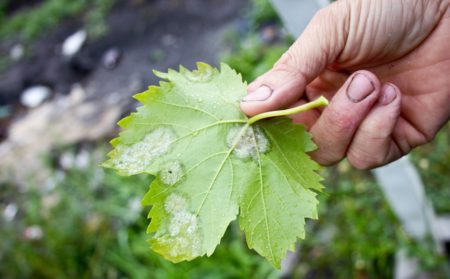
Among the most common crop-threatening infections are:
- mildew;
- gray and black rot;
- oidium;
- anthracnose;
- Septoria;
- chlorosis.
Fungal infections are dangerous because they spread too quickly over plantings, damaging the shoots, leaves, and the berries themselves. Prevention diseases more effective than the treatment itself, while less financial costs.
What pests of grapes must be fought in the spring
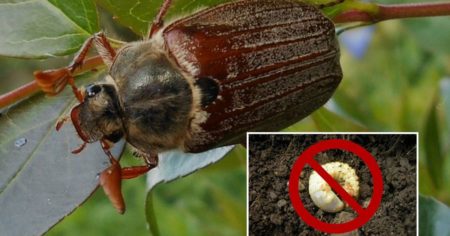
Before the summer heat, it is advisable to process the vineyards from the dangerous and treacherous aphid phylloxera. There are no effective drugs for the pest, therefore, the role of preventive spraying is especially growing.
Among the insects causing the vineyards the most harm:
- grape mites (arachnoid, leaf and felt);
- leaflets;
- Khrushchev.
Pest larvae hibernate in soil, plant debris in tree trunks. With the onset of heat, the pests become more active, go from hibernation to wakefulness and further development. At this time, do not miss the timing of the sprayings.
When to process grapes in spring
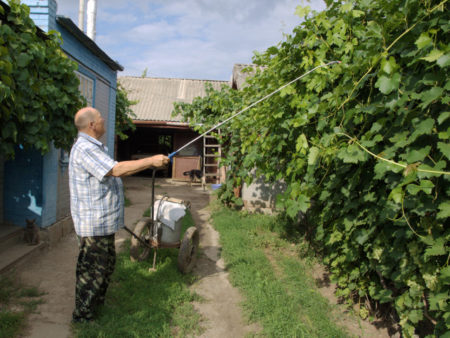
In most regions of Russia, the culture is grown by cover method. In the early spring, with the arrival of warm days, the vine is gradually opened, tied to a trellis wire, aired after wintering.Having completely removed the protection, they begin to prepare the plants for the new season.
Dates:
- Immediately after opening the bushes after wintering. AT middle lane - The first half of April, in the south - the end of March. They are guided by the weather, preventing vines from immature after winter from falling under return frosts. Use fungicides.
- The second time sprayed grape bushes in the second half of April. At this time, the buds open, the first leaves appear. Insecticides are used against dangerous crop pests. If insects were observed on the bushes last season, the treatment with insecticides is repeated (after about 10-12 days).
- The third treatment falls on the period after flowering bushes. The procedure is final, use a mixture of drugs.
The selection of funds depends on the varieties planted on the site, the general condition of the plants. If the plantings are healthy, last year there were no outbreaks of infections or damage to bushes by insects, then it is enough to use folk remedies and low-toxic chemicals.
With large numbers of pests and the presence of diseases in previous seasons, you will have to pay more attention to spring treatments. Some folk recipes can not do, it is necessary to use highly effective insecticides and fungicides.
How to process grapes in spring
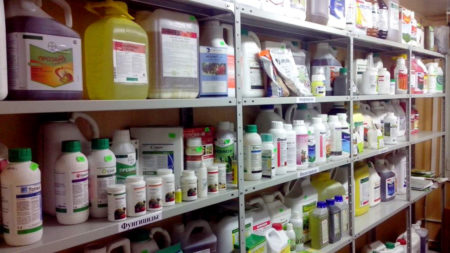
In the arsenal of the gardener should be different spray preparations vines.
Groups of drugs:
- chemical (active substance - a combination of chemical elements);
- biological (based on bacteria that cause the death of pathogens, microorganisms);
- preparations prepared according to folk recipes.
Also, the compounds are divided by purpose:
- fungicides (inhibit fungal infections);
- insecticides (directed against insect pests).
When choosing take into account climatic conditions, grape varieties, their resistance to disease, pest damage.
Chemicals
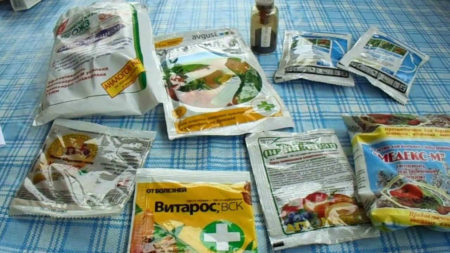
For spring treatments of the vine, universal preparations are usually used that have a wide range of effects.
Bordeaux mixture
The remedy is effective against mildew, anthracnose. Prepare compositions of various concentrations:
- 3% - for spraying before budding
- 1% - after flowering bushes.
Valid for 8-12 days. Compatible with all major drugs, with the exception of products containing tiram.
Blue vitriol
Refers to fungicidal a broad spectrum of exposure. Used for the prevention of fungal infections, is highly effective.
For the first treatments in the spring, a concentration of 300 grams per bucket of water is used, for repeated prophylaxis, 100 grams per 10 liters. The validity period is 7-14 days. It is forbidden to use the drug during the flowering period of grapes.
inkstone
A good result is given by spraying the plantings of vineyards with a solution of iron sulfate. Used by:
- to protect against damage by gray rot, mildew, anthracnose;
- to shift the timing of budding in an unfavorable weather forecast.
Working solution: 500 grams of the product are diluted in a bucket of water. Duration of treatment: immediately after removing the shelter of the bushes, before budding.
Ridomil Gold
Well-recommended in the fight against mildew is a systemic and contact drug. Hazard Class - II.
The main active ingredient is mancozeb.
Working composition: take 4 grams of water for 4 liters of water. Granules quickly dissolve in water, protective effect - up to two weeks.
Quadris
Well compatible with other fungicides. The active substance is azoxystrobin. Action: against fungal diseases (mildew, oidium). Processing time: before flowering and after flowering.
In addition to suppressing fungal infections, Quadris helps to increase the yield of grapes, improve the taste of berries.
Colloidal sulfur
Means of a wide spectrum of action, is used to prevent the development of foci of mildew, oidium. It has a lasting effect, it is considered one of the best remedies for spring prevention.
Application: spraying grapes before budding. Composition: 40 grams per bucket of cool water. It is recommended that the bushes be treated simultaneously with copper-based preparations.
Vermitek
Vermitek rescues from ticks and grape itching. The tool quickly penetrates into the tissues of plants, does not form spots on the culture.
Active ingredient: abamectin. Working composition: 5-8 ml are diluted in a bucket of water.
Vermitek is sprayed with plantings immediately after the opening of the bushes, during the period of kidney swelling.
Bi-58
Of the new generation of drugs for grapes used BI-58 - contact insecticide. The active substance is dimethoate. In spring, as a preventive measure, grapes are sprayed with a BI-58 solution from spider web and felt mites, aphids.
Working solution: one ampoule of the drug (5 ml) is diluted in a bucket of water.
Use the composition immediately after preparation. For storage, the diluted BI-58 solution is not suitable.
Biological products
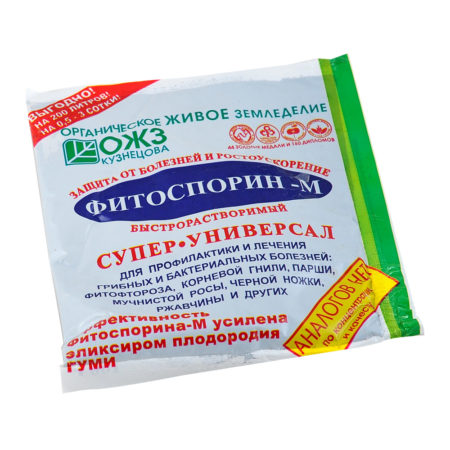
Actofit
The composition of the product includes products of the production of soil fungus that infects insect pests. On grapes, it is effective to use Actofit (or agravertine, acarin) against the leaf mullet of a bunch and spider mite.
Use: prevention, at the time of the appearance of insects. Working solution: 20 ml of Actofit are diluted in a bucket of water. It is recommended to add soap shampoo or shampoo to the composition for adhesion. Waiting periods - two days.
Trichodermin
At the heart of the product is trichoderm saprophyte, which processes organics into inorganic compounds. The drug suppresses over 50 different infections, is available in grains (granules), in liquid form.Non-toxic, perfectly combined with other means (preparation of tank mixtures).
Working solution: 50 ml of the product are diluted in a bucket of water. It is advisable to take water that is not chlorinated. The first treatment - from the period of budding, then - after 20 days (for prevention). It is recommended to treat bushes in cloudy weather, after rain. With high humidity, trichoderma shows high activity
Fitosporin
At the base is hay stick, humic additives are also present. The drug is known among gardeners, gardeners due to its effectiveness.
There are no waiting periods; the result depends on weather conditions. In the spring they process grapes during budding, the next time after flowering.
Working solution: 15 ml of Fitosporin are diluted in a bucket of water. It is advisable to first make a concentrated solution (in two liters of water), and then bring it to a full ten-liter volume.
Mikosan
An effective biological product, based on the substance of mycosan obtained by fungal cells. The use in vineyards as a prophylactic means provides protection against fungal diseases, helps to increase resistance to adverse weather conditions.
Processing time: when the first leaves appear. Working solution: 100 ml of Mikosan are diluted in 4 liters. In tank mixtures with other drugs of biological origin is not used.
Ecogel
For watering grape bushes at the root and spraying before leafing, Ecogel is recommended.It is based on the substance chitosan, which activates protective functions in plants and helps to increase immunity.
As a result, grapes are able to withstand dangerous fungal and bacterial diseases. Planting up to the first leaves is watered at the root, after blooming the greens are sprayed.
A good effect is given by the use of spring biological preparations Planriz, Nematofagin, and Haupsin.
Folk remedies
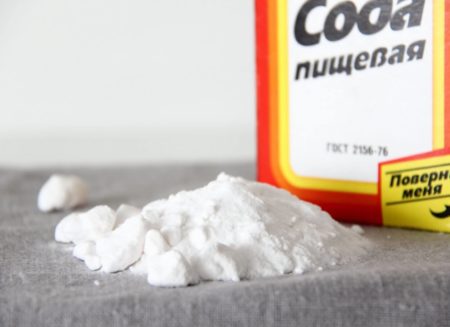
From fungal spores, invasion of pests help the processing of compounds based on natural remedies. Among them:
- baking soda;
- ash;
- iodine;
- onion peel;
- garlic;
- potassium permanganate.
In the spring, it is useful to process the vines with the following compounds:
- Milk solution. A liter of skim milk is diluted in a bucket of water, stirred. Spray for prevention from powdery mildew.
- At the stage of budding, the use of a mixture of laundry soap and ash is indicated. Tools are diluted in a 1: 1 ratio in a bucket of cool water.
- A solution of iodine will protect against the appearance of gray rot: a bottle is diluted in five liters of water, the vine is sprayed during the appearance of leaves.
- A good result gives tincture of garlic. It helps against all types of ticks, itching. 50 grams of chopped garlic cloves are stirred in 500 ml of water. Then everyone is diluted with water, the volume is one liter. They process the vine in early spring, then in the period before the flowering bushes.
- Before the color set, and then after apply the infusion of peel of onion. To do this, take a half of a ten-liter bucket of husk, pour water and simmer for about 20-30 minutes. Then remove, leave for 24-30 hours, filter. Add a little honey (enough tablespoon), mix, spray the bushes.
What common mistakes gardeners make
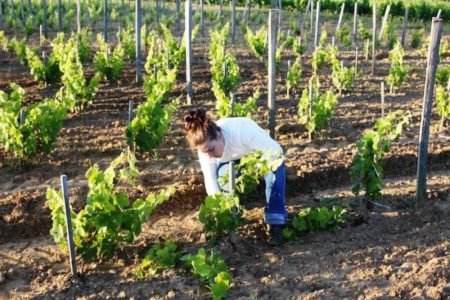
Even experienced growers do not always properly process plantings in the spring. The main mistakes:
- Failure to comply with the processing time. Spraying is carried out immediately after the opening of the vines, then the intervals are observed, taking into account the weather conditions and the condition of the plants. During the flowering period of grapes, no procedures are carried out. Further, prophylaxis is resumed, plantings are also monitored, and the means of application are adjusted.
- The concentration of drug solutions is disrupted.
- Lack of prevention. Beginning gardeners due to strong employment in the spring do not carry out processing, which leads to outbreaks of diseases and loss of yield.
Spring treatments are an important part of the general agricultural technology of the crop. Without preventive measures, grapes are vulnerable to pests and diseases. Treatment in later periods is often ineffective, there is a high risk of death of the crop and the plants themselves. Therefore, it is not worth experimenting, it is better to follow the advice of specialists and process plantings according to the recommendations.
Reviews
Eugene, Belgorod
I am always with the grape harvest, and I think that spring processing is very helpful in this. Over the years I developed my own scheme, sometimes I make changes. Usually in the period before flowering I process Thanos and Topaz. After flowering, I use Topaz in conjunction with Ridomil. It is possible to completely "close" the oidium. Sometimes it slips mildew, but not enough.
Sergey, Kursk region
In the spring I always spray the vines, but the main work still falls on the summer. I always tie the scheme to weather conditions. In my climate, the main enemies are mildew and oidium. Therefore, in April I go through treatment with Topaz and Ridomil, after flowering with Topaz. The last three years, the summer was good, dry, so there was no mildew. Including due to prevention.

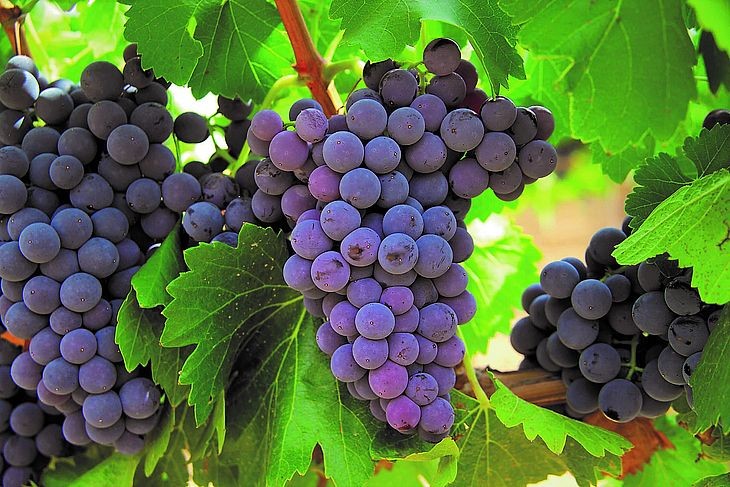



 Non-covering winter-hardy grape varieties for Moscow region
Non-covering winter-hardy grape varieties for Moscow region How to keep the vine in winter
How to keep the vine in winter When can I transfer grapes to another place in the fall
When can I transfer grapes to another place in the fall How to cover and prepare grapes for the winter in the suburbs
How to cover and prepare grapes for the winter in the suburbs